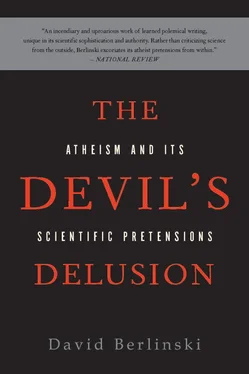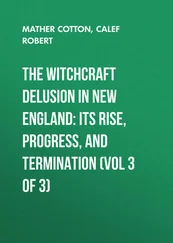The idea has had a tremendous unifying power, suggesting that nature’s elementary particles could be recovered from one fundamental object vibrating in various ways. In place of the very complicated system of precisely adjusted forces and parameters characteristic of the Standard Model, string theory pointed to two, and only two, fundamental constraints: The first reflected the string’s tension, and so served as the key to its powers of creation; and the second, its coupling constant, the measure of how likely it was to break into two.
Nothing more was needed. This was widely considered a very fine thing.
There followed an illumination, one that lit up all of particle physics. Working very much in isolation, the physicists Joël Scherk and John Schwarz observed that string theory, no matter how manipulated, seemed to predict the existence of a new particle, something like the photon. This seemed to be something uncalled for and therefore unwanted, until physicists realized that amid all those twitching strings, a particle had appeared conveying the force of gravity. For the first time, a fundamental theory in particle physics seemed to incorporate a long-missing force. A grand unification seemed to be at hand, one involving all nature’s forces. No theory could be more final—or more desired—than this.
From that moment on, a number of physicists had the rarest of all experiences: They came to believe that they could hear Nature herself knocking at their door.
In the years that followed—roughly from the late 1970s until the present—string theory expanded and grew great. Difficulties appeared and were surmounted, whereupon new difficulties appeared. Physicists were obligated to undertake very difficult calculations with respect to a theory that they did not completely understand. Their work revealed strange coincidences and tantalizing suggestions of a deeper form of unity. By the early part of the twenty-first century, they could look back on two string theoretic revolutions, and while both advanced the cause, neither brought the goal of a single, clearly stated final theory within reach.
The reaction, although slow in coming, was also inevitable. String theory was criticized in the popular press by a distinguished theoretical physicist and a mathematician. In The Trouble with Physics, written by Lee Smolin, and Not Even Wrong, by Peter Woit, string theory was examined with some sympathy and found wanting. Neither author could find a theory in the place where theoreticians said a theory should be, and both authors noted with some asperity that string theory had no apparent connections to experiment and that none were in prospect. Woit went so far as to observe that the mathematical structure on which the theory rested, far from being a thing of great elegance, was the most horrible thing he had ever seen.

Whatever their other merits, all string theories are characterized by an embarrassing dimensional overflow. Some versions of string theory require twenty-six dimensions; others, ten; and still others, eleven. Our own universe contains only three or four, but in any case, no more than a handful. It is one thing to consider higher dimensions as mathematical artifacts. Mathematicians have no difficulty in dealing with an infinite dimensional space. They do it all the time. But the extra dimensions of string theory are not purely mathematical. They are within string theory quite real, if only because they have useful work they must do. If real, those extra dimensions are nonetheless invisible. As one might easily imagine, the conflict between the demands of theory— Get me those extra dimensions —and the constraints of common sense— No extra dimensions here, Boss, and we looked —was not easily resolved.
In the end, string theorists argued that the extra dimensions of their theory were buried somewhere. At each point in space and time, they conjectured, there one would find a tiny geometrical object known as a Calabi-Yau manifold, and curled up within, there one would find the extra dimensions of string theory itself.
It was an idea that possessed every advantage except clarity, elegance, and a demonstrated connection to reality.
With extra dimensions buried, stable solutions emerged from the equations of string theory, just as the physicists had hoped. They were not, unfortunately, unique. There were thousands of them, and each led to a different version of the theory, a point in an enormous space of possibilities, a landscape of a sort never seen before, a place where each point seemed to embody a different scheme of physical thought, and so a different universe governed by the scheme. In its appearance in various popular journals, the mutant thing was depicted as a gigantic set of bubbles floating in space, our own universe a dimpled dot lost somewhere amid that infernally expanding froth.
FLIGHT INTO THE FANTASTIC
String theory confronted the community of particle physicists with an exquisite dilemma. A theory that initially seemed too good to be true had by the late 1990s seemed too good to be true. This was widely considered monstrously unjust.
If string theory did not uniquely describe one universe, physicists reasoned, the fault lay with our universe: It was not man enough to handle so promiscuous a theory. One universe having proved inadequate, more would be required. Endeavoring to unify the forces of nature, physicists determined to multiply the universes in which they were satisfied. Very few physicists appreciated the irony involved in pursuing the first ambition by embracing the second. The physicist Leonard Susskind thus claimed that “the narrow 20th-century view of a unique universe, about ten billion years old and ten billion light years across with a unique set of physical laws, is giving way to something far bigger and pregnant with new possibilities.”
Far bigger? And pregnant too? In service to this idea, Susskind wrote that “physicists and cosmologists are coming to see our ten billion light years as an infinitesimal pocket of a stupendous megaverse.” On reflection, Susskind came to understand that the word megaverse carried negative class associations, as in mega-blockbuster (a movie no one wishes to see) or mega-mall (a place no one wishes to go), whereupon he renamed the megaverse “the Landscape.”
The Landscape at once suggested the radical changes to come. “Theoretical physicists,” Susskind wrote, “are proposing theories which demote our ordinary laws of nature to a tiny comer of a gigantic landscape of mathematical possibilities.”
Each of the versions of string theory is thus free to find its home in some particular universe. Like Odysseus worshipping in foreign temples, there is a universe in which a very large cosmological constant is made to feel welcome. The MIT physicist Max Tegmark is persuaded that this is so, and if in some universe he is persuaded that it is not so, he has learned to accept the emotional incoherence that would trouble others with equanimity.
However named, the Landscape was a provocative, and even a revolutionary idea. Physicists appreciate revolutions for obvious reasons: They stir the blood. “We may be at a new turning point, a radical change in what we accept as a legitimate foundation for a physical theory,” Steven Weinberg wrote. It would be hard to imagine a doctrine more radical than the thesis that when it comes to universes, there are a great many of them. At a conference on string theory held in 2005, Weinberg buoyantly indicated that he was prepared to welcome his new insect overlords.
Читать дальше













